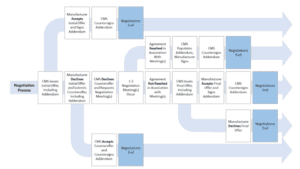Regulator to engage MGA sector on emerging risks

Canadian Insurance Services Regulatory Organizations (CISRO) will soon be engaging Canada’s national MGA association to find out the emerging risks for the sector, the regulator said during a recent industry event.
“Later this year, CISRO will be engaging CAMGA [Canadian Association of Managing General Agents] to find out… what are the big, emerging risks that you think regulators should be thinking about,” said Thera Medcof, chairwoman of CISRO’s Principles Working Group. “That will help us really think about what we can do for our strategic plan for the next coming three years.”
CISRO, a forum of Canadian regulatory authorities focused on consistent qualifications and conduct of business standards for insurance intermediaries, was formed in the mid-1990s. However, they’ve only had one strategic plan to date, from 2019 to 2022, Medcof said during CAMGA’s inaugural 2022 conference on June 9 in Toronto.
To get a better understanding of the overall P&C industry, CISRO engages with other regulators such as the Canadian Council of Insurance Regulators (CCIR), and will do so in the MGA context to see the “bigger picture,” said Medcof, who is also a senior policy manager at the Financial Services Regulatory Authority of Ontario.
iStock.com/AmnajKhetsamtip
“And then from that work, we choose activities as you would from any strategic plan, and create committees to work around that. So do stay tuned,” she said during a presentation on MGA licensing and regulation.
Late last year, CAMGA’s board and membership approved and adopted an undertaking as a condition of membership beginning Jan. 1. The self-regulatory regime codified minimum business operating standards for P&C MGAs in Canada. At a high level, the three main pillars are that:
The MGA carries errors & omissions insurance that meets or exceeds the mandated minimum standards in every jurisdiction in which the member carriers on business (as applicable to insurance intermediaries)
Every MGA has an operating trust account for premiums that will be audited by provincial regulators (currently, rate can be co-mingled within operating budgets)
At the quote stage, the MGA provides an explicit list and names of carriers and whether they are licensed or not (to provide transparency on the carrier).
Canadian Underwriter asked CAMGA managing director Steve Masnyk about what he sees as the emerging risks for the MGA sector and any feedback on the undertaking from a regulatory point of view.
“What we took away from our discussions with them, is that, because P&C MGAs never deal with the end consumer or the public—and the principles for intermediaries and their strategic plan is all about protecting the consumer—some different and separate standards of operating practices would be more appropriate for this sector,” Masnyk said.
P&C MGAs only deal with the licensed retail broker and on the flip side, they are outsourced service providers to carriers. They provide exactly the same activities as underwriters employed by carriers, Masnyk said.
“This is why to assist CISRO, and fill that void, we created the CAMGA Code of business operating standards; rules that apply to delegated underwriters like P&C MGAs,” he said. “We hope this provides regulators a starting point for our engagement with them.”
Medcof also reported during the conference that CISRO is doing a “considerable amount of work on the general insurance licensing qualification review.
“That’s to work towards common core curriculum and competencies for general insurance agents and brokers,” Medcof said. “So, I think you’ll really see the outcomes of that as you work with brokers in the industry.”
Feature image by iStock.com/PeopleImages





